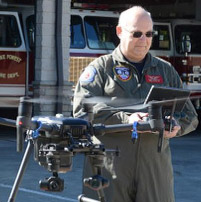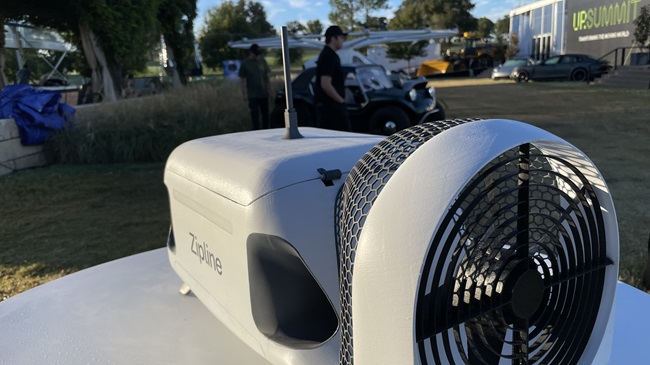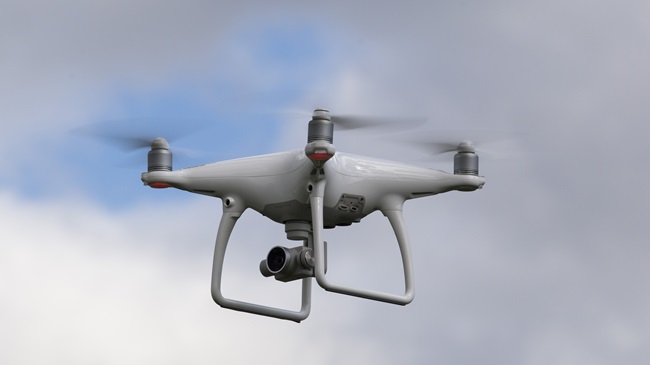Flying backward into the unknown
Multirotor aircraft can fly in any direction with ease, but too many public safety agencies start a drone program the wrong way around.
Hardly a day goes by that a public safety agency doesn't contact me for some advice and feedback while starting an unmanned aircraft program. Firefighters and police officers are finding life as an "accidental aviator" can be hard. Learning the arcane details of aviation, and navigating the bureaucracy and safety culture of the FAA, is daunting to any pilot, and for those who have never flown it’s really an unreasonable ask.
So, I get a lot of calls from people who are six steps down the road having skipped the first five, and stuck. Rather than assessing needs, goals, and implementation, it seems most organizations start first with selecting the type of aircraft they want to buy. But the same department would not rush out to buy a fire truck or helicopter and then figure out if they need it or it's the right piece of equipment.
Where to start
In all types of public safety use of drones, the biggest hurdle that you should deal with first does not involve flying at all.
Before your department starts a drone program, you should ask and answer the following questions:
- How will we incorporate information generated by an unmanned aircraft system (UAS) into our current incident command process?
- Who will fly the drones?
- What kind of data will help us complete the mission?
In a fast-moving event, the incident commander (IC) typically does not have the luxury of time to sit and look at a drone video monitor, interpret data generated, and watch the drone fly around. The UAS pilot should be experienced and knowledgeable enough to interpret the data (usually the thermal or video image from the camera), provide actionable intelligence to the IC, and know when the new information can make a difference.
For example, here are times when it makes sense to interrupt a busy IC: when a target of interest is spotted, when a side of a building in a commercial structure fire is warming up fast, or when thermal fire is seen that is not visible fire.
Getting this issue resolved for new flight operations is frequently a political challenge. A change of process may ruffle a few feathers, but it is without a doubt the key to a successful program.
Taking a process-first approach allows the organization to fumble through the initial stages of program development before spending a lot of money. From the development of procedures, policies, and guides to practicing with tabletop exercises, it all takes longer than you expect.
Before you even purchase a drone, you should be able to walk through how you plan to incorporate new operational information into your department's historical process.
You should think about the basic parts of this process:
- Will the pilot be located near the IC to relay information easily?
- Will the pilot or flight team have to try to inject actionable information across a busy radio channel in a rapidly unfolding event?
- Will the IC require that a video monitor be set up for them, a video feed started, or some other technological hurdle that is mandatory before flight?
My experience in public safety UAS flight has taught me that the best way to get actionable information to the IC is what I call Sneakernet: Rather than try to send a video feed and communicate over a busy radio channel, I will just walk over to the IC with the controller in hand. This allows me to point at the screen, provide a professional assessment of what I am seeing, and have a discussion of what the next step will be. Next-generation UAS pilots will need to be excellent data interpreters rather than stick pushers. Future aircraft will do more of the flying automatically.
My advice when it comes to pilot selection is to start small, ideally training just one or two people to serve as pilots. Even if a public safety agency is planning to apply for a Certificate of Waiver or Authorization (COA), all pilots should first pass the Part 107 examination and earn FAA certification.
There is never a good reason for any entity to self-certify their pilots since not all flights are qualified Public Aircraft Operations (PAO), and when a flight is later found to not be a qualified PAO flight, the pilot bears sole responsibility for the flight as a noncertificated pilot if they don't hold a Part 107 certification. COAs are a very complex issue that even experienced agencies do not fully understand. More information on this confusing subject can be found here.
It’s all about the data
Before selecting a particular model of aircraft, the most important question to ask and answer is what you want your UAS to do for you.
Some departments get pretty excited about thermal imaging, but in reality, they don't have enough experience to know UAS thermal cameras have significant limitations and less than optimal resolution to clearly understand what is out there. It takes a lot of training and practice to master aerial thermography, and an ordinary visible camera can deliver a lot of information much more easily, and inexpensively.
Another consideration is whether rapid deployment will be more valuable than detailed data. Some situations have unique requirements, with more than one kind of data vital to success. The aircraft and payloads should be selected to match local needs.
As fast as the technology is advancing, UAS purchased this year will be quickly outdated and cheaper by the time the process basics are resolved. This is why it’s always best to get the process under control before shopping for anything.
It is also smarter and better to purchase less expensive initial UAS units to work out the incorporation process and learn the hard lessons from the loss of aircraft due to inexperience. Even something like this UAS can be beneficial.
Deputy Sheriff Rick Hassna, the chief pilot for the Alameda County Sheriff's Office, shared his experience and lessons learned from starting a program during the recent FAA UAS Symposium in Baltimore. He said the first drones the organization bought were expensive, military-grade models that turned out to be “the most unstable aircraft we've ever flown … they hit the police building during a demo."
More expensive does not mean better.
“I am a big advocate to start small, inexpensive," Hassna added. Take it from someone who learned the hard way.
“If you don't spend a lot of money, you can stay at the leading edge of technology,” Hassna added. I could not agree more. The big, expensive UAS platforms available today might seem tempting, but you’re as likely to get cut as make a breakthrough when living on that bleeding edge.




